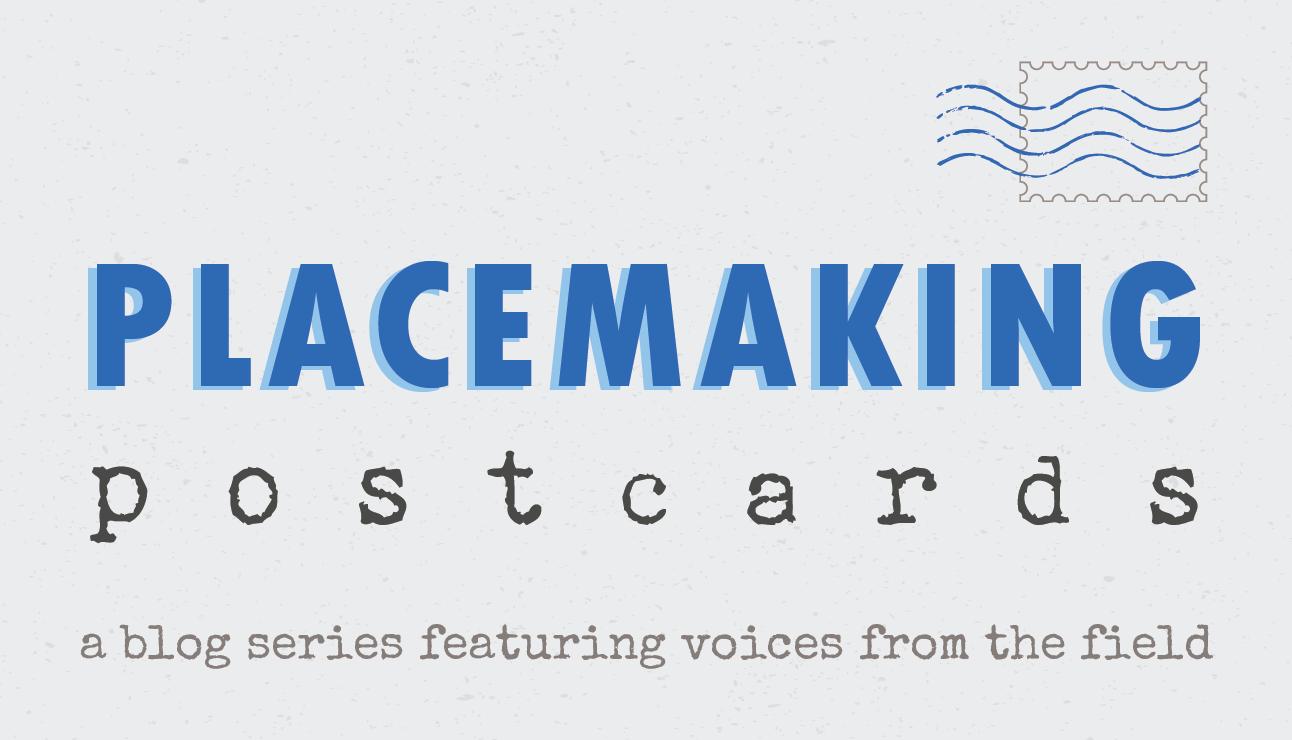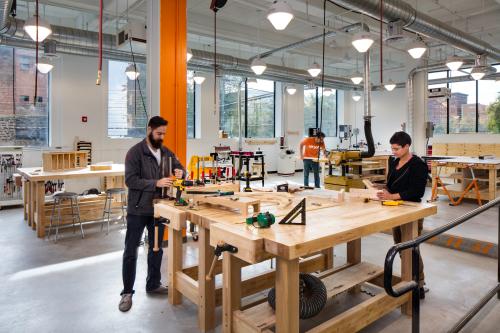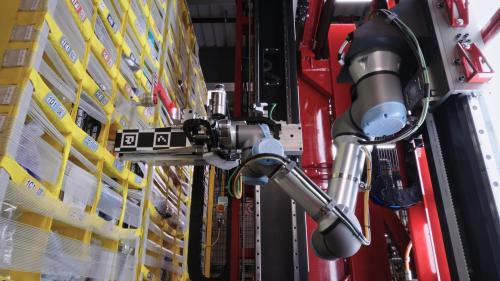Placemaking Postcards is a blog series from the Bass Center for Transformative Placemaking at Brookings where policymakers and practitioners guest-author promising placemaking efforts from across the U.S. and abroad that foster connected, vibrant, and inclusive communities. In line with the principle tenets of placemaking, the goal of the series is to recognize the community as the expert, highlight voices from the field, and to create a community of learning and practice around transformative placemaking.
 This decade may very well be the era of the innovation district. As Brookings and others have noted, we are witnessing an international trend toward redevelopment and revitalization in small and large communities alike, alongside the growing dominance of concentrated high-tech innovation sectors. This has given rise to the innovation district model, which clusters leading-edge anchor institutions, companies, startups, business incubators, and accelerators to spur economic development in downtowns and other dense urban enclaves.
This decade may very well be the era of the innovation district. As Brookings and others have noted, we are witnessing an international trend toward redevelopment and revitalization in small and large communities alike, alongside the growing dominance of concentrated high-tech innovation sectors. This has given rise to the innovation district model, which clusters leading-edge anchor institutions, companies, startups, business incubators, and accelerators to spur economic development in downtowns and other dense urban enclaves.
Yet innovation districts are expanding at a time of widening disparities among people and places. New technologies can have an isolating impact for those caught on the wrong side of the digital divide, excluding them from access due to affordability, outdated or nonexistent infrastructure, or a host of other barriers. Innovation districts themselves may be perceived as dividing communities, drawing boundaries between high-amenity, technology-rich hubs and their under-resourced adjacent neighborhoods.
Given the challenges confronting emerging innovation economies, district leaders are faced with a difficult, but important question: How can we advance place-based, innovation-driven economic development while ensuring more people reap the benefits?
Building a more inclusive innovation district
There was a point in the not-too-distant past when Chattanooga, Tenn.—a midsized city of about 180,000 people nestled between the Cumberland Plateau and the Appalachian Mountains of southeast Tennessee—was better known for the “Choo Choo” than being at the forefront of anything. But in the last decade, Chattanooga has launched the first fiber optic network in North America capable of delivering 1-gig (and now 10-gig) speeds to any home or business, as well as the first innovation district in a city of its size.
In 2015, the city officially designated the 140 acres of downtown as the Innovation District of Chattanooga, offering innovation economy assets including startup incubators and accelerators, venture capital firms, coworking spaces, housing, multimodal transportation, parks and plazas, coffee shops, bars, and eateries, all served by EPB’s publicly owned smart grid and fiber network.
But soon after the District gained support from prospective tenants and legacy institutions, it became clear that—while it held enormous potential as an economic driver—it also risked further segmenting a community already marked by economic and geographic divisions.
To help ensure the District didn’t deepen these divisions, in 2015 stakeholders in Chattanooga launched a digital-equity initiative, Tech Goes Home (adapted from the successful Boston model), to coincide with the launch of the Innovation District. The Enterprise Center, a nonprofit economic development partner to both the city of Chattanooga and Hamilton County, leads the program, which works with local partners to provide community members with 15 hours of digital skills training, a new device (e.g., a Chromebook or iPad), and assistance acquiring low-cost home internet. The program, which in four years has served over 4,500 residents, is designed to remove fear and instill agency for those caught on the wrong side of the digital divide. Just as important, it is meant to make Chattanooga Innovation District a place where everyone—particularly those who have previously been excluded from such spaces—feels welcome.
A community-wide effort
As Chattanooga expands its Innovation District, its inclusion strategies are designed to play off each other, balancing efforts to promote digital training and STEM education with small business support programs such as mentoring, coaching, seed capital access, and entrepreneurial assistance. The Enterprise Center has been at the nexus of this with Tech Goes Home, but we have not been working at this alone.
The District’s efforts to promote inclusion have required coordination and collaboration across workforce development, economic development, and community development stakeholders. For example, RAMP—a new workforce development program at Chattanooga State Community College—enrolls participants in Tech Goes Home and culminates with an employment offer at an Innovation District anchor. La Paz offers a small business class entirely in Spanish, while our local Kiva loan program provides skills for social media proficiency. And the LAUNCH Chattanooga incubator offers digital marketing and finance skills to underrepresented entrepreneurs. Beyond providing such supports, these programs bring underserved populations directly into the Innovation District.
The Edney Innovation Center has been another crucial player in opening the door to the Innovation District. The repurposed 10-story office building is home to the Enterprise Center, as well as a business accelerator, two floors of coworking space, the city’s IT department, university researchers, and startup offices. It houses an entire floor of event and meeting space, which has hosted international conferences, poetry workshops, school district meetups, and more. It’s also the site of Tech Goes Home’s yearly graduation celebration, welcoming every participant from the program and their families into the heart of the Innovation District.
Empowering participation through a sense of ownership, not just by invitation
Our efforts strive to empower residents to pursue success on their own terms, make their own decisions, and participate in the innovation economy through a sense of ownership, rather than only by invitation. This takes time, ongoing consultation with communities, and a lot of hard work, but we’ve distilled a few lessons that have helped us—and can help others—get there:
- Connect digital inclusion efforts: As discussed above, we’ve taken on digital inclusion as a community and intentionally connected that work with our Innovation District, creating overlapping access to social networks, physical assets, and internet connectivity. See the National Digital Inclusion Alliance (NDIA) for a number of best practices.
- Advance a collaborative model: We’ve convened community stakeholders around Innovation District development, smart city piloting, and bridging the digital divide to promote inclusion under one unified roof.
- Offer flexible public space and inclusive programming: We’ve ensured that multipurpose community spaces are part of place-based innovation strategies and lowered barriers to entry through regular events such as our Innovation Ecosystem Tour.
- Consider equity when building smart city infrastructure: If you’re making an investment in smart city technologies, look for ways to maximize your impact by investing in digital equity at the same time—for example, by including public Wi-Fi infrastructure when adding environmental sensors or installing fiber.
As Brookings notes, “At a time of rising social inequality, [Innovation Districts] offer the prospect of expanding employment and educational opportunities for disadvantaged populations given that many districts are close to low- and moderate-income neighborhoods.” Yet the capacity to achieve such crucial outcomes also depends on accessibility—proximity alone has proved insufficient in bridging the gaps that exist between two sides of the same street.
When the disconnected fall behind the curve in an increasingly online world, they can find themselves alienated from the resources right outside their front door. Supporting residents through relationships, networking, and agency to engage on their own terms—the fundamental work of digital inclusion—is one way forward in a world dictated by both geography and connectivity.
The Brookings Institution is committed to quality, independence, and impact.
We are supported by a diverse array of funders. In line with our values and policies, each Brookings publication represents the sole views of its author(s).








Commentary
How Chattanooga, Tenn. is leveraging digital inclusion to open its innovation district to all
January 14, 2020